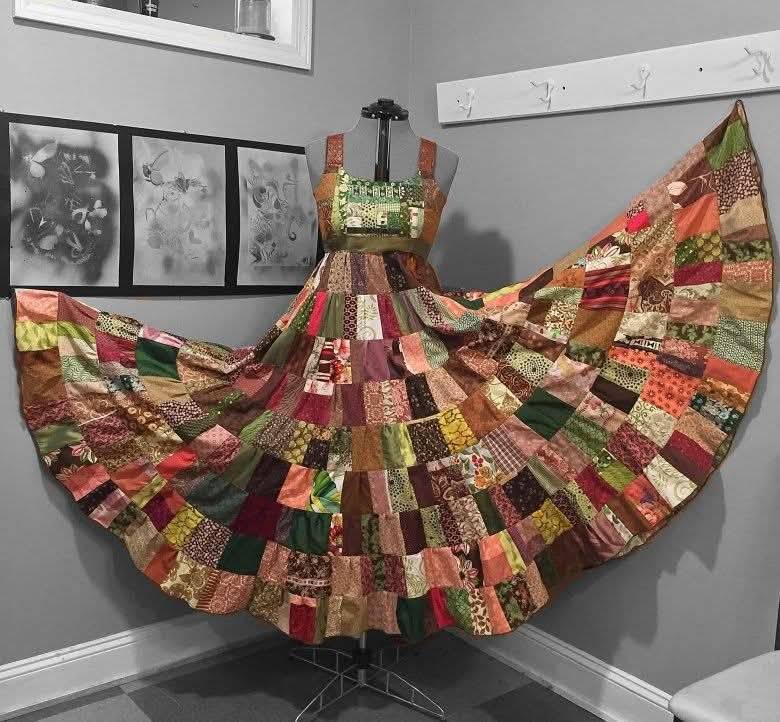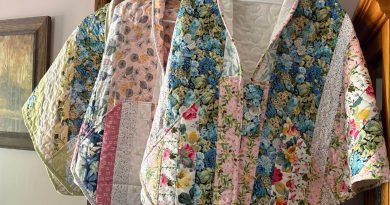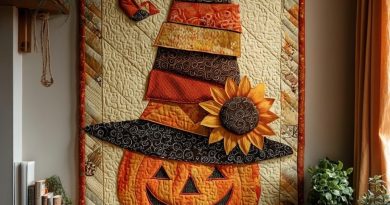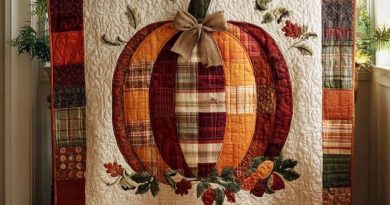Patchwork Prairie Dress – A Quilted Boho Masterpiece
Intro (4 paragraphs, English):
There’s something magical about breathing new life into scraps of fabric. The Patchwork Prairie Dress celebrates the beauty of reuse, craftsmanship, and color storytelling all in one sweeping design. This patchwork dress combines the soul of quilting with the flow of a prairie gown—each piece hand-selected, stitched, and arranged to create a one-of-a-kind work of wearable art.
Inspired by traditional American quilts and 1970s bohemian fashion, this dress captures the warmth and nostalgia of home-sewn clothing. It’s a joyful reminder that sustainability can be stunning—that leftover fabric from other projects can come together to form something entirely new.
Whether you’re a quilter looking to transform your stash into something wearable, or a beginner drawn to the rustic charm of handmade clothing, this project is both approachable and endlessly customizable. Every strip and square tells a story, and when you swirl in your finished dress, you’ll feel like you’re dancing through a patchwork garden.
Ready to turn your quilting table into a fashion atelier? Let’s dive into the process of creating your very own Patchwork Prairie Dress.
Materials
- Assorted cotton fabric scraps (at least 20–25 prints in warm, earthy, or jewel tones)
- Lining fabric (light cotton or muslin) – 2 to 3 yards
- Bias tape or fabric for binding
- Sewing machine and thread (neutral or multi-color)
- Fabric scissors or rotary cutter and mat
- Measuring tape
- Optional: zipper or buttons for back closure
Step 1: Choose and Prepare Your Fabrics

Gather your leftover quilting fabrics—florals, plaids, solids, and textural prints work beautifully together. Iron each piece flat and trim into uniform rectangles. A good base size for the patchwork blocks is 3.5” × 6”, but feel free to adjust based on your desired scale. The more variation in color and texture, the more organic your final result will feel.
Sort your fabrics by tone—warm (reds, oranges, browns), cool (greens, blues), and neutral (beiges, creams)—to ensure balanced placement. This step is like painting with fabric: lay out your rectangles on the floor or design wall until you love the flow of color.
Step 2: Sew the Patchwork Panels
Sew the rectangles together along the long edge using a ¼” seam allowance to create horizontal strips. Press seams open or to one side. Continue until you have long strips, then sew those strips together vertically to form large panels.
For the skirt, you’ll want a tiered effect, with each lower tier slightly wider than the one above it. To achieve this, add extra rectangles per tier as you go down. For a full, dramatic skirt like the one shown, aim for at least five tiers.
Step 3: Construct the Bodice
Create a fitted bodice using a simple pattern or an existing top that fits you well as a template. Cut the bodice front and back from your patchwork panel, making sure to line it with muslin for stability. Add wide shoulder straps and a square neckline for a rustic look.
If you prefer adjustability, leave the back open for a corset-style lace-up or insert a zipper for easy dressing. Press all seams and check the fit before attaching the skirt.
Step 4: Assemble the Dress
Attach the bodice to the top tier of the skirt, right sides together. Pin carefully to ensure even distribution of gathers or pleats. Continue by adding the remaining skirt tiers, each slightly gathered to the one above it for volume and flow.
Finish raw edges with bias tape or serging, and hem the dress to your desired length. A floor-length cut enhances the romantic, vintage feel, while a midi version feels more modern and playful.
Step 5: Final Touches
Press the entire dress, focusing on seams and edges for a clean finish. You can add a ribbon sash at the waist or a fabric belt for definition. If you want extra comfort, sew a lightweight lining or petticoat beneath the skirt.
And just like that, you’ve transformed a collection of scraps into an unforgettable piece of art! The finished Patchwork Prairie Dress twirls beautifully and carries the warmth of handmade history—perfect for festivals, picnics, or quiet afternoons spent stitching by the window.
✨ Pro Tip: Use leftover pieces from this project to make a matching tote bag or hair scarf for a complete patchwork look!



